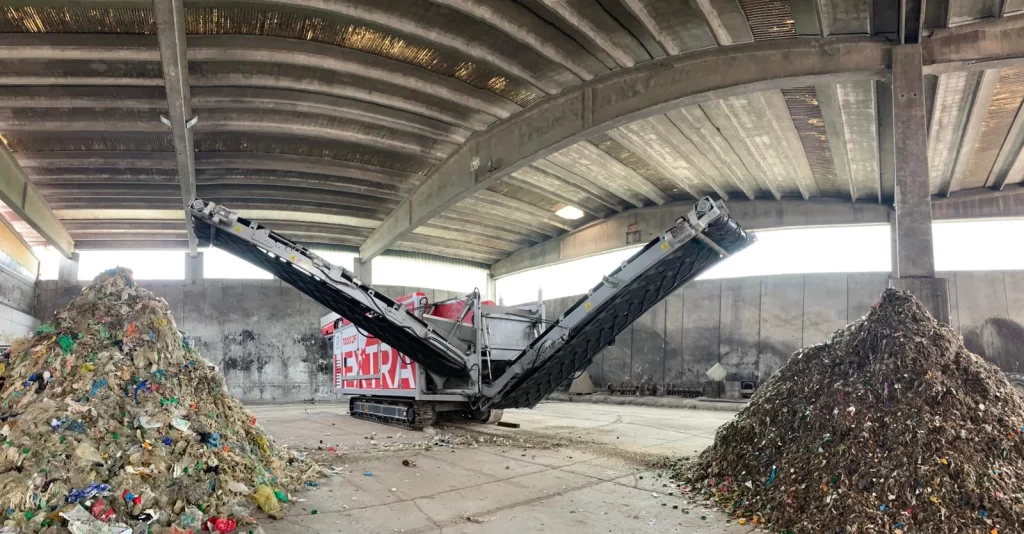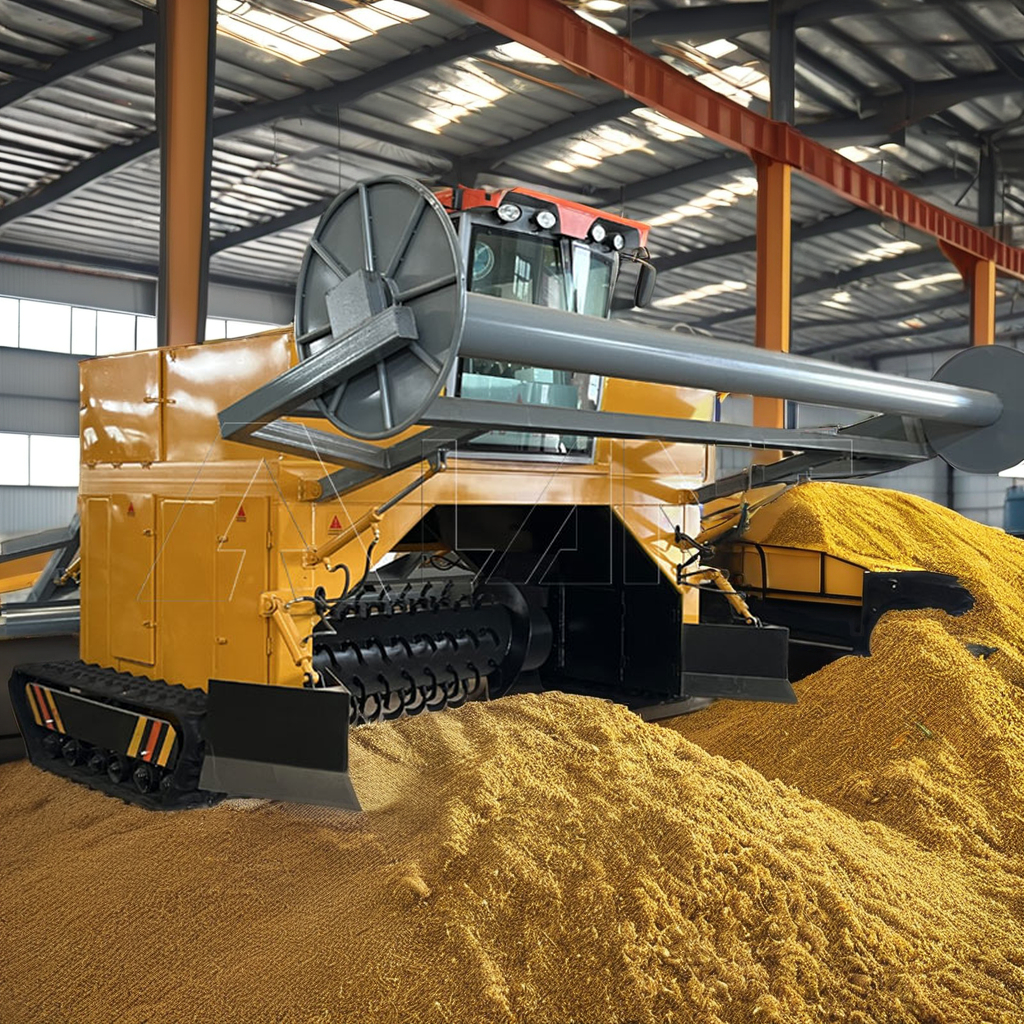With the growth of population and the development of industrial economy, the production of urban solid waste (sludge, garbage) has increased dramatically. It is reported that China’s urban waste production is currently 100 million tons/year, but is still growing at a rate of 10%. Data shows that the total amount of municipal solid waste generated in the United States has increased from 88.1 million tons in 1960 to 254.1 million tons per year in 2013. Municipal solid waste (MSW), also known as garbage or trash, is a type of waste that people discard every day.

Generally speaking, there are three sources of urban domestic waste.
1.Domestic solid waste comes from households and public places, including waste collected from residential buildings, garbage bins, streets, sea areas and country parks.
2.Commercial solid waste comes from shops, restaurants, hotels, offices and markets in private housing estates.
3.Industrial solid waste refers to all solid waste generated by industry, excluding construction waste, chemical waste or other special waste.
Urban solid waste components Solid waste treatment methods include incineration, landfill, land utilization, etc. Municipal solid waste contains a large amount of organic matter and nutrients necessary for plant growth and can be used as land fertilizer. However, urban solid waste also contains a large number of pollutants such as pathogens, weeds, and heavy metals. The organic matter in the waste is unstable and easily degraded, so it needs to be properly treated before use, otherwise the solid waste will cause harm to the environment and crops.
There is currently interest in municipal solid waste management, building on the success of composting yard clippings, agricultural waste, and sewage sludge. One of the effective treatment methods is composting municipal solid waste. As we all know, since municipal solid waste contains materials with greatly different sizes, moisture and nutrient contents, municipal solid waste composting requires a series of treatment processes, including collection, pollutant separation, grading and mixing, and windrow composting.
The waste treatment line has a processing capacity of 200 tons/day. After the garbage truck is weighed by the truck scale, it is loaded onto the loading platform and dumped directly into the garbage collection room for garbage storage. The room is a sealed warehouse where staff sort the garbage into categories such as large furniture, quilts, cotton clothes, damaged bathroom decorations, decorations, wine bottles, pesticide bottles, fluorescent tubes, etc.
The solid waste is then transported by a loader from the stacker to the hopper of the apron feeder, which is located on the ground. The garbage is fed through a plate feeder, and the bagged garbage is torn off by an elevator. The bagging machine has the functions of breaking bags and ripping cloth. Therefore, the feeding of the plate feeder plays a role in uniform feeding, which is conducive to the smooth operation of subsequent equipment.
The garbage is then sent by belt conveyors to a large manual sorting platform, where large garbage, hazardous garbage, etc. are manually sorted.
After manual sorting, the garbage is sent to the drum screening machine for screening. The sieve plate aperture is 20mm and 60mm. The screening machine can separate the solid garbage into materials smaller than 20mm, larger than 20mm and smaller than 60mm, and larger than 60mm. The 20mm material is mainly sand and gravel, which is usually used for landfill.

Materials larger than 20mm and smaller than 60mm are mainly organic matter. The iron in the organic matter (bottle caps, batteries, coins, etc.) is selected and then enters the municipal solid waste compost. In order to maximize the selection of batteries, we designed a magnetic roller on the belt conveyor drive roller, which can select small button batteries from organic matter, which is beneficial to improve the quality of urban solid waste composting.
Materials larger than 60 mm are fed into an integrated scraper, which can separate heavy objects (stones, construction waste, glass, porcelain, hard plastics, textiles, shoes, large pieces of organic matter, wood, diapers, etc.) and light objects (light plastic, dry leaves, dry paper, etc.). The selected heavy objects are manually sorted to select hard plastics, large pieces of organic matter and undifferentiated unburned garbage (stones, construction waste, glass, porcelain, etc.). The remaining materials are combustibles, which are crushed, dried, and squeezed. Made into RDF fuel, it can be sold in hard plastic packaging. Bulk organic matter is transported to municipal solid waste composting areas to be composted together with organic matter.
The pre-sorted organic matter is transported to the main fermentation tank through a hopper and a conveyor. The main fermentation can be carried out in the open air or in a fermentation box, with oxygen supplied by stirring or forced ventilation. The method of supplying air depends on the type of fermenter. The initial fermentation material is decomposed at the most suitable temperature for thermophilic bacteria (growth and reproduction temperature is 30-40℃).
As the temperature rises, the bacteria can decompose efficiently, and the oxygen supply and heat preservation of the pile are good. Then it enters the cooling phase. The stage from when the temperature rises to when it begins to cool down is called the main fermentation period. The main fermentation period of aerobic composting using a municipal solid waste compost pile turner is about 4 to 12 days.

If the carbon-nitrogen ratio in municipal solid waste compost is too high, it will lead to nitrogen deficiency in the soil; if the carbon-nitrogen ratio is too low and untreated compost is applied to the soil, it will decompose into ammonia and harm the growth of crops. Therefore, after the main fermentation of municipal solid waste composting is completed, post-fermentation must be carried out. Post-fermentation can be carried out in a dedicated warehouse, but usually the materials are piled up to 1 to 2 meters high and are in an open fermentation state.
In order to improve the efficiency of post-fermentation, turning or ventilation is sometimes required. Organic matter that has not yet been decomposed during the main fermentation process may be fully decomposed at this stage and turned into relatively stable organic matter such as humic acid and amino acids, which can fully mature the compost. The post-fermentation time is generally 15 to 20 days.
For more details, please feel free to contact us.
Henan Lane Heavy Industry Machinery Technology Co., Ltd.
Email: sales2@lanesvc.com
Contact number: +86 15515885328
Whatsapp: +86 15515885328